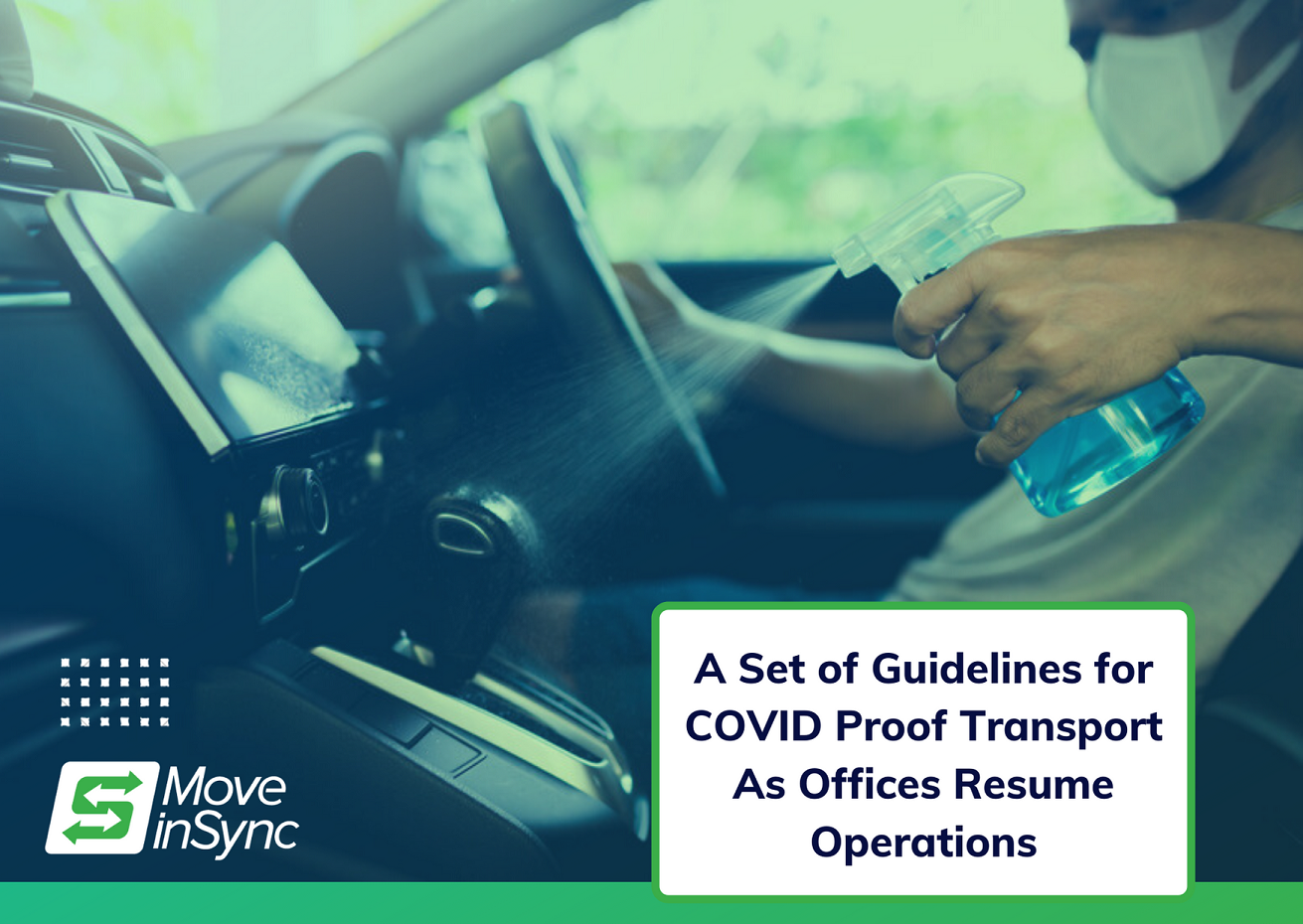
60 days. 1.3 billion people. It was not easy to put a country on lockdown, but the governing bodies deemed it necessary to curb the spread of COVID-19.
The shops were shut. Factories were closed. Offices vacated. And for most, the option to work from home became a comforting option. However, a slowing economy and falling GDP required re-opening of activities at the earliest.
The decision to re-open workplaces came in phases. Manufacturing and pharmaceutical units were the first to open followed by offices with 33% of their workforce. After almost 3 months of lockdown, offices are now resuming in full capacity.
While it may come as a relief for many, employee commute remains a major hurdle for most organizations.
In a survey conducted by the Confederation of India Industry (CII), 36% of the respondents said that most organizations were struggling with safe employee commute. The keyword here being ‘safe.’

The network of public transport has been reduced significantly. Maintaining social distancing is pivotal. Providing a sanitized travel environment is a must. And each one of these has become a concern for organizations.
Hence, the need for strict guidelines that provide the perfect solution to each problem mentioned.
So, who do these guidelines apply to? And what do they specify? Keep scrolling to find out more.
Recommended: Download the COVID Handbook and take the right measures
Who are these guidelines for?
These guidelines have been devised for all organizations returning to work and need to use commute services. Employees, and vendor partners who provide such services, will also be following these guidelines to ensure optimum safety of all who are or will be commuting.
Observing Key Responsibilities
CONCERNED PEOPLE |
RESPONSIBILITIES |
| Employees | Maintain social distancing and adhere to the guidelines issued by the employer/organization |
| Employers or Organizations | Provide timely information on demand patterns to enable better planning and smooth delivery of the fleet |
| Transport Service Provider | Ensure services are delivered while adhering to the guidelines issued by the governing authorities and organizations. |
Employers Availing the Services: Things to Keep in Mind

Bringing back employees to the offices has become a massive challenge for all employers. However, with a comprehensive set of guidelines at helm, taking the right steps to safeguard employee commute can become easier. Some of these include:
- Providing proper headcount and adequate time if changes are required to the same
- Procuring specific travel passes for vehicles and/or bonafide employees from the local authorities for ease of movement
- Providing manpower to carry out sanitization of vehicles and temperature monitoring
- Building an adequate buffer between shifts to manage these activities
- Providing masks for employees and other contractual staff involved in the services
- Managing instances where medical assistance is required and providing equipment like thermometers
- Providing necessary space to carry out sanitization activities on their campus
- Using dedicated vehicles to ensure hygiene and maintain safety standards
Also Read: How Indian Companies are taking the fight COVID-19
MoveInSync: Redefining Every Aspect of Employee Commute

MoveInSync for over a decade has established itself as a leading provider of corporate employee commute by driving 1/4th of the IT/ITES workforce in India. Recognized as one of the leading providers of employee transportation across several countries, our efforts are directed to safeguard commute. This has prompted us to make changes to the technological and operational procedures we follow.
In the face of the pandemic, we have decided to address every aspect of employee commute and make it COVID proof. These include:
Technology & Procedural Changes
- OTP based/ Contactless sign-in and sign-off to avoid contact during attendance capture
- Push notifications for all users including drivers, employees, and transport teams
- Configuration of the EHS module to ensure mandatory cab sanitization, availability of sanitizers, and masks for the drivers for every trip
- Route planning to restrict rostering for employees residing in containment zones
- Alarm to warn drivers when entering containment zones
- Restrict the capacity of each vehicle to 30% to 40%. For instance, 4-seaters will ferry 1 employee, 6-seaters will have 2, 13-seaters will have 4 to 5 employees

Ground Operations
- Sanitizing every cab before and after every trip
- Ensuring that all drivers, vendors and MoveInSync staff will be wearing masks while on duty
- Monitoring temperature for all employees and drivers before and after trips
- Placing placards with basic safety guidelines
- Preventing the use of air conditioning in vehicles
To Conclude
Yes, it is true that we are undergoing a difficult time. However, it is up to each one of us to make the right choices, steer changes, and ultimately accept them.
With these new sets of guidelines, not only can we safeguard everyone but we can establish a system of trust. And that is exactly what we need.
Bonus Tip: How shared mobility is driving change in enterprise transportation
The dedication MoveInSync showcased towards its customer welfare in such unprecedented times is a testimony to its main objective- make employee commute easier, predictable, and transparent.
By implementing these changes to our Total Solution, we can achieve complete automation of employee transport system, all the while being COVID proof.
Eventually, offices will resume. But taking a step in the direction of safety and transparency is our primary goal. With MoveInSync Total, we look to ensure seamless employee commute, in the present and in the future.
To get a demo, get in touch with our team of experts today. To stay updated with the latest trends and news from the transport industry, subscribe today.





